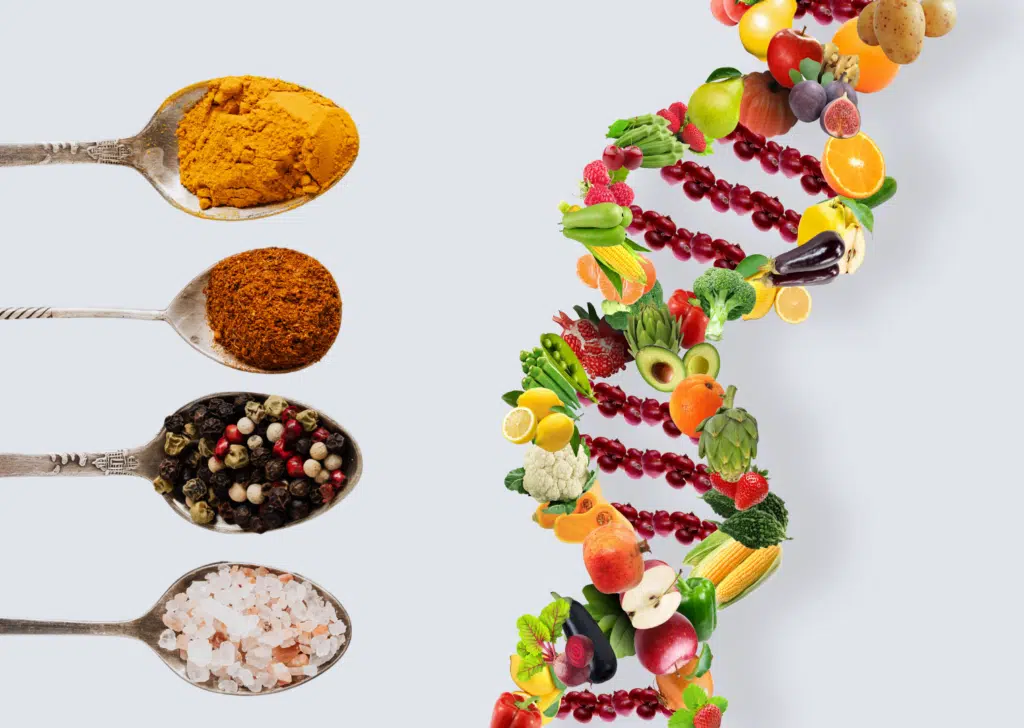Not all fat is the same. And fat is not automatically unhealthy, quite the opposite. We need fats to stay healthy and vital. However, we should pay attention to which fats and how much of them we consume. What the difference between the different types of fat is and why some fats are wrongly portrayed as “bad”, you will learn here. We’ll also show you which foods contain good fats and which are better left alone.
The difference between good and bad fats
Along with proteins and carbohydrates, fats are a basic nutrient and essential for our health. However, there are chemical differences between the various types of fat, which also trigger different effects in the body. Both the healthy ones and the often misnamed “unhealthy” ones can trigger both health-promoting and health-damaging processes. The following applies: The dose makes the poison.
Fats can be divided into two broad categories:saturated and unsaturated fatty acids. What exactly distinguishes the two and from which you should consume more, we explain to you.
Saturated fatty acids
Saturated fatty acids: They are generally regarded as the “bad” fats – wrongly so. Like unsaturated fatty acids, saturated fatty acids also perform important tasks in the body. They are building blocks for our cells, provide us with energy and are needed for the absorption of fat-soluble vitamins. We can only speak of a health hazard if we consume too many saturated fatty acids. Excessive consumption can raise cholesterol levels and thus increase the risk of cardiovascular disease. Saturated fatty acids should make up about 10% of our daily calorie requirement. They are found primarily in animal products such as eggs, meat and sausage products, and dairy products.
Unsaturated fatty acids
Unsaturated fatty acids have a good reputation. They are considered “good” fats and are presented as healthier, especially compared to saturated fatty acids. They can be divided into two subcategories: Monounsaturated fatty acids and polyunsaturated fatty acids. Especially the latter are said to have good effects on health. Just like saturated fatty acids, we need unsaturated fatty acids for our bodies to function and remain healthy. However, they do not have a negative effect on cholesterol levels, so we can and should consume more of them. A ratio of 1:2 is recommended.
Unsaturated fats are found in vegetable products, such as flax or safflower oil, nuts but also in fatty fish such as salmon. It is important to take in enough polyunsaturated fatty acids, as our body cannot produce them itself. During preparation, care should be taken not to heat the oils too much, as they turn into unhealthy trans fats above about 130°.
Omega-3 fatty acids
When it comes to healthy fats, there is no getting around omega-3 fatty acids. They belong to the group of polyunsaturated fatty acids and have a number of health-promoting effects. They are building blocks of our cells and of messenger substances, strengthen the immune system and reduce inflammation. Since omega-3 fatty acids belong to the (poly)unsaturated fatty acids, they are found in similar foods: fatty fish such as mackerel or herring, flaxseed, nuts or hemp. Due to their positive effect on health, omega-3 fatty acids are now offered in capsules. However, these should not be swallowed without prior consultation with medical professionals, as too much of a good thing is not always good. Omega-3 fatty acids can affect blood clotting and, if taken in too high doses, can lead to undesirable effects such as inhibited blood clotting.
In contrast to the omega-3 fatty acids, one should consume less of the omega-6 fatty acids. A ratio of 1:5 is recommended.
Epigenetics and Nutrition: How Diet Affects Your Health
Are you curious about how your eating habits can change not only your body but also your genes? Find out more about the benefits of epigenetic nutrition and how to implement the diet. Epigenetics and Nutrition: understanding the connection Our DNA consists of up to 25,000 genes. These genes are essentially the blueprint for our […]
Energy Production – Our Body as an Engine
No matter whether we lie on the couch all day, lift weights or run a marathon: Our body needs energy. But how do we manage to turn food into the fuel for our activities and what actually happens in your body when you exercise? Find out here.
Effects of Physical Inactivity on Health
Many people spend most of their day doing sedentary activities, whether at work, watching TV or at the computer.
An increasing lack of time, health awareness as well as opportunities for movement at work, lead to an underload of the musculature. Experts then speak of a lack of exercise. A lack of exercise exists when the frequency and intensity of physical activity do not meet the recommendation of at least 150 minutes of exercise or 75 minutes of sport per week. Symptoms of a lack of exercise include postural weaknesses and faulty posture due to weak back or foot muscles. In addition, there is overweight.







